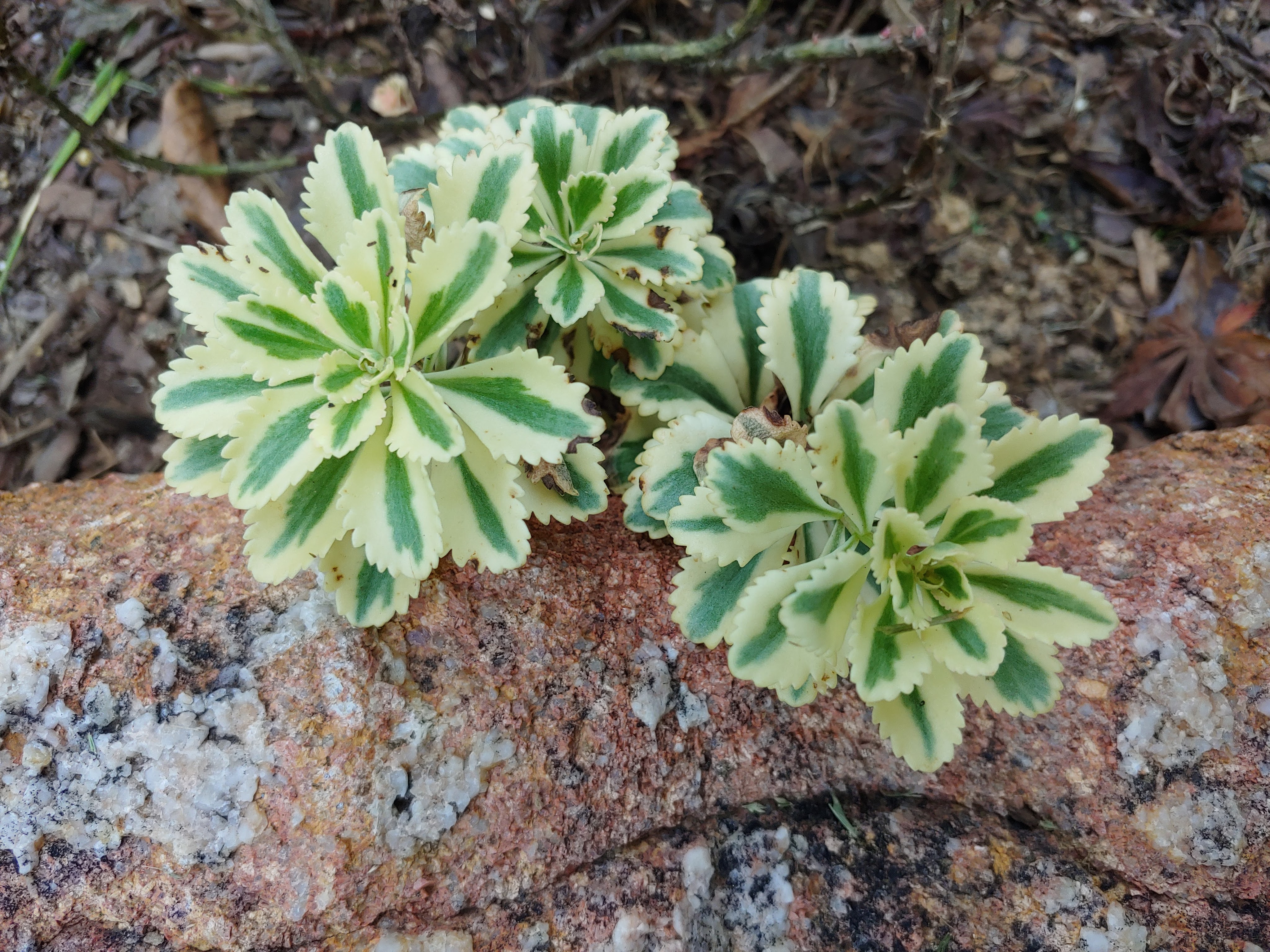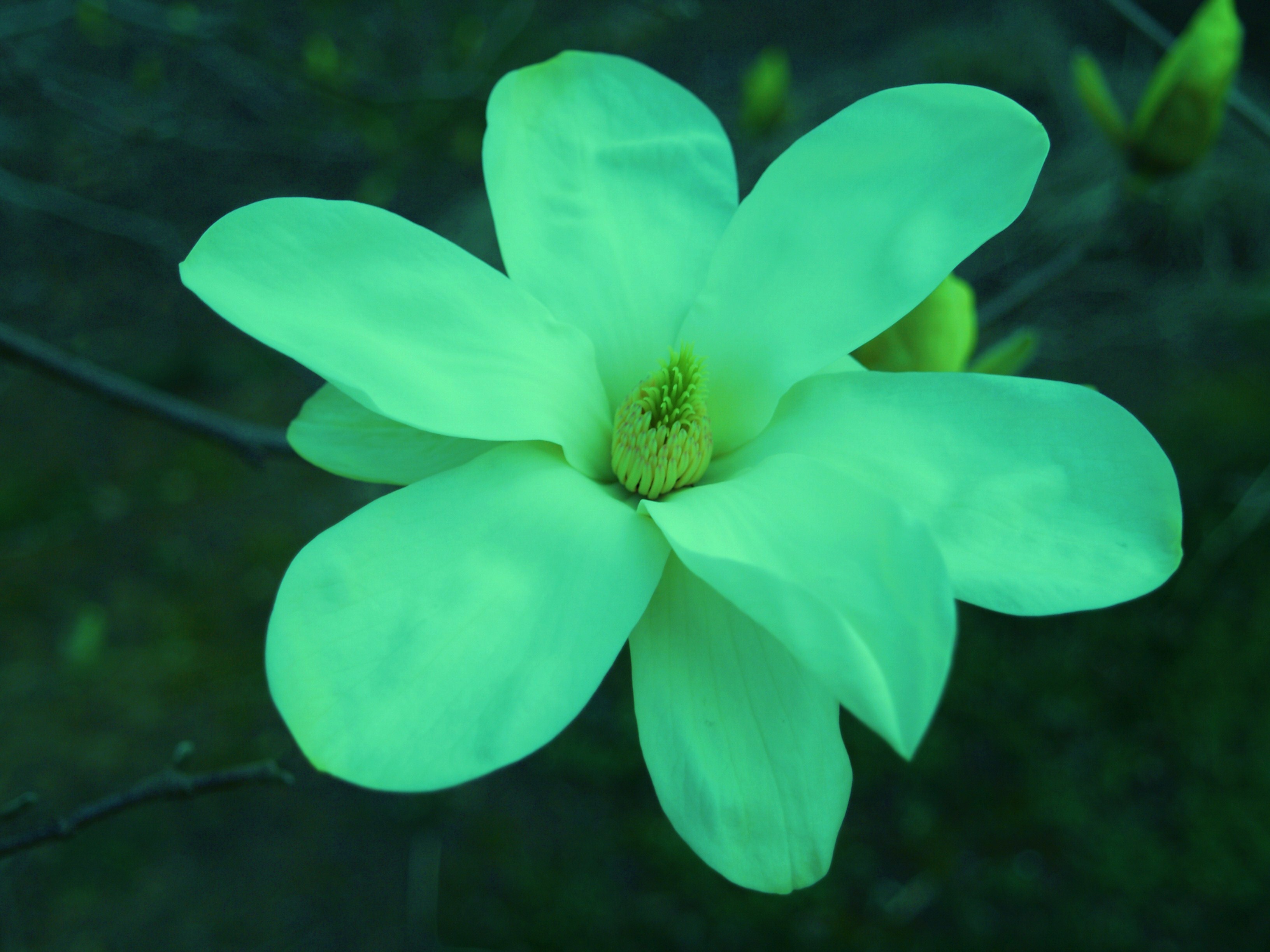Today, the garden suffers the typical traumas from the stresses of summer heat, but also from inches of rain in recent weeks. Variegated sedums (below) along a dry, rocky ledge (but backfilled by rich clay) flourished in the heat of July, but a few inches of rain turned much of the foliage to black. Fortunately, with a slight turn back to drier conditions the sedums are showing signs of revival. This sedum was spring planted, so with another growing season I do not expect a repeat with every rainy spell.

The gardener understands that every season has its traumas, most minor, and he must not become bothered by every yellowing leaf. Leaves of the single low hanging branch of the bigleaf magnolia (Magnolia macrophylla, below) are fading prematurely in September. Perhaps this deeply shaded limb is dying, and that would be disappointing since all flowers would then be far overhead, but there is nothing I can do to save it. I do not suspect a more serious problem with the magnolia, only a question that will be answered in spring when the branch leafs, or doesn’t.

A disaster was very narrowly averted as a long dead willow several paces off the property line toppled in a storm the day before remnants of the recent hurricane passed through. With weedy mulberry trees in between I had no reason to suspect the willow would fall in the direction of the pale, yellow flowered ‘Elizabeth’ magnolia (below), and I have been known to work formulas to predict the height of an ailing tree and the projected distance of its fall to protect trees in the garden. I did not do so with the willow, and undoubtedly its fall would have done considerable damage if the rotted trunk had not broken twenty feet up as it snapped upon hitting the much smaller mulberries.

A hodgepodge of rotted willow and green mulberry branches then tumbled to the ground, with much of the willow falling into the street. A quick glance at dawn as I drove over branches heading to work was troubling, but with no danger to the house and a narrow path to pass on the road I figured I’d work it out when I returned home.
In the evening the road blockage had been pushed aside, onto the small area of lawn we mow though it is beyond our property. I discovered that dear ‘Elizabeth’ had barely escaped, and only a spicebush (Calycanthus) was buried beneath the rubble. Today, as I sawed the willow and mulberries into manageable sections, I found the spicebush protected by the severely bent but not broken trunks of the mulberries, without a single broken branch. Now, there is a disorderly pile of sawed logs and green mulberry branches that will soon turn brown, but no more than a few ruts left in the lawn.
Needless to say, I am relieved, and most often seemingly horrific problems are much less severe once the debris is sorted through..
I love the look of those sedums!
The blackened stems are just out of view, but they’re recovering.